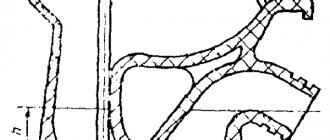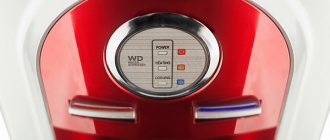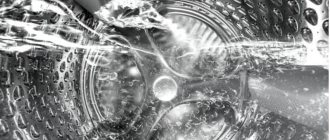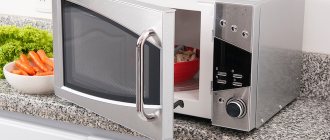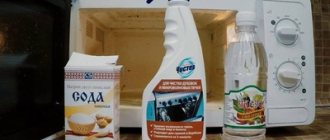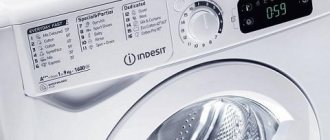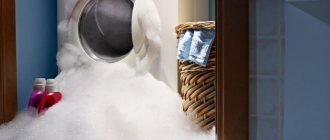Every housewife tries to maintain order in the apartment, keeping it clean and taking care of the pleasant aroma of freshness in the premises. But all efforts can be ruined by the unpleasant smell from the kitchen sink, which spreads over time throughout all the rooms. Without taking measures, in addition to the “aroma,” you can get even more troubles: clogged pipes, poisoning with harmful fumes. How to quickly eliminate the smell from the kitchen sink and at the same time avoid large financial expenses? Find out from our article the most effective control methods at home.
Causes of unpleasant odors from the sink
First, identify the causes of the problem:
- Siphon clogged. The curved part of the pipe often stops functioning due to simple clogging with food debris, hairs, and greasy deposits. The particles settle in the siphon itself, on the surfaces of the pipes from the inside, forming a layer of sediment impenetrable to water. As they decompose, they emit a heavy rotting smell that spreads from the siphon through the sink into the kitchen.
- Incorrect siphon installation. There is nothing complicated about connecting plumbing fixtures, but often the cause of spoiled indoor air is errors in pipe connections.
- The siphon does not cope with its functions, the seal is broken, air and unpleasant odors penetrate into the kitchen.
- Air entering the sewer risers. The appearance of an air lock in the pipes will be indicated by gurgling sounds, as well as slow drainage of water.
- Corrugation sagging. Even properly installed pipes stretch during operation. Various problems arise: wastewater accumulates in the sagging area, and a water seal does not form.
- Defects of pipes, corrugations, siphon. They arise due to mechanical impacts on the system, as well as due to the loss of corrugated elasticity.
- Problems with sealing the corrugation and riser. All connections must be joined using rubber sealing rings, adapters, and adjusted to the diameters. If the installation is not correct, the smell will penetrate from the pipes into the premises.
Odor problems often arise when taps and sinks have not been used for a long time. There are no blockages in the siphon, but there is also no necessary protection from air and odors in the water. There must be water inside the device, creating a water seal. In the absence of water, pungent odors of sewage and rotting sediments arise.
Effective folk remedies for blockages in the sink
Stores sell special chemicals that can quickly remove problematic odors and dissolve food clogs, but they are not always available in the house. Folk experience and a home arsenal of improvised means will come to the rescue:
- Table or rock salt. Pour the dry powder into the siphon through the hole and leave for 3 hours. Rinse with strong water jet.
- Soda. The product is poured inside, and vinegar (1 bottle) is poured on top. We recommend closing the hole with a stopper or lid; foam will erupt as a result of the reaction of the two components.
- Dry mustard. The product eats away grease and waste and removes sewer smell coming from the sink. Just pour it into the sink and fill it with hot water.
- Acetic acid solution. The handy method effectively combats the causes of stench. 700-800 ml is poured into the drain. active substance concentration 6-9%! The hole is closed from above with a cloth, stopper or bag to prevent evaporation. After 40 minutes, the sink is washed with 20 liters of heated water.
We recommend: Quick ways to remove sweat odor from clothes without washing
After clearing the blockages, squeeze a lemon or a drop of flavored oil into the pipe, this will transform the kitchen and smell pleasant.
Why is the smell dangerous?
Foul-smelling air is a big nuisance for household members. In addition to discomfort, it is dangerous due to toxicity. Components of heavy aroma:
- hydrogen sulfide;
- ammonia;
- methane.
The first two substances smell sharp and unpleasant, methane has practically no smell. The presence of these elements in the air negatively affects the state of the respiratory system and affects the nervous system.
A person constantly feels discomfort, anxiety, and fear. Methane causes nervous breakdowns and sometimes fainting.
Fixing the problem with a plunger
An irreplaceable thing in the household is a simple plumbing fixture, a plunger. It is advisable to have several plungers: for the toilet, sink, bathroom. The rubber cap of the device is applied to the sink drain and pressed with a handle. Turn on the water and then vigorously press the cap several times. Up-and-down suction streams of water pump the pipe, removing possible blockages.
Next, remove the device from the sink, thoroughly wash off all deposits with water, and rinse the pipe.
The plunger is convenient to use if you do not want to disassemble the corrugation. Even women can easily cope with such a device. If the plunger does not help, use special cables.
Using a cable
Plumbing stores offer a wide range of different cables for cleaning pipes. Their length varies from 3-5 meters and more, while the cables are equipped with special handles for rotation, brushes or a spiral hook.
For the cleaning:
- Remove the siphon corrugation.
- Carefully insert the cable into the pipe.
- They begin to push the device into the riser by turning the handle. The cable is screwed into the pipe, passing along its entire length.
- Having tightened the blockage, they begin to move the cable in different directions. An alternative is to push the deposits further, hooking them with a hook.
- Repeat the manipulations 2-3 times until the pipe is completely clean.
- Connect the corrugation, turn on the water and rinse the pipe.
After use, the cable is washed to remove deposits and dirt and lubricated with oil. Place in a bay and store in a dry place.
How to remove odor from a sink using mechanical methods
If the cause of the stench from the sewer is a blockage, before using odor elimination products, clean the drain using any mechanical method.
We recommend: DIY air freshener with natural flavors
plunger
This cleaning method is the most affordable and simplest. Usually a plunger copes with the cleaning task the first or second time.
Mode of application:
- Place the plunger in the sink.
- Press the rubber pad firmly against the drain hole so that it completely covers it.
- Pour some hot water into the sink.
- Grab the handle of the plunger, alternately apply pressure and release several times in a row.
- After the last press, quickly remove the plunger from the sink.
- Repeat the procedure if necessary.
After all manipulations, rinse the drain with plenty of hot water.
Metal cable
If waste has accumulated far from the drain hole, the plunger will not have enough power to clear the pipe. In such a case, use a steel plumbing cable. The end of the tool usually has a hook or brush to help break through the clog.
Action plan:
Remove the siphon elbow. Point the end of the cable into the hole and carefully push it inside the pipe. When you feel that the cable has collided with the plug, try to push it even deeper with pushing or rotating movements in different directions. Remove the cable from time to time; the hook may catch part of the blockage. If the cable begins to move easily, it means that the debris has been removed.
After the procedure, return the knee to its place and rinse the drain with hot water.
Country hose
The method of removing blockages using hydrodynamics, well known among plumbers, can be carried out at home without the use of expensive equipment. For the procedure you will need a regular thin hose, a nail and a soldering iron.
Scheme for manufacturing the device:
- Cut a piece of hose to the required length.
- Seal one end of it so that it does not allow liquid to pass through.
- At a distance of about 10 cm from the soldered end, use a hot nail to make several holes in a circle.
- The product is ready.
Instructions for use:
- Push the blind end of the hose into the clogged pipe.
- Attach the open end tightly to the tap.
- Turn on the water at high pressure.
- During the process, water will come out of the side holes under pressure, washing away accumulated contaminants.
- After this, remove the hose from the pipe and rinse the drain with hot water.
The procedure will help get rid of plaque and food debris.
Analysis of the plumbing unit
If there is a smell, but no blockages are found, check the pipes. Perhaps the stench from the sewer is coming to you due to contamination of the riser or plumbing unit. This is possible if the pipes are damaged or connected incorrectly. First, inspect all pipes for damage. Then disassemble the plumbing unit and reassemble it, carefully sealing the joints.
You can eliminate the smell from the kitchen sink using special store-bought household chemicals, or using homemade recipes.
In some cases, when the smell from the drain is accompanied by a clog, cleaning using tools may be necessary . In order to reduce the likelihood of a problem occurring, it is important to use preventive measures and maintain cleanliness.
Disassembling the siphon
Disassembling the plumbing unit will help remove dirt and grease from the siphon. Corrugated tubes are considered self-cleaning; siphons with a flask require regular cleaning.
- Place a basin or bucket under the sink and siphon.
- Carefully unscrew the flask from the pipe, clean it, and rinse it. To remove greasy deposits inside, dishwashing gel is added to the water.
- Reconnect the flask without losing the spacer rings in the connections.
- Run water through the sink faucet, flushing the pipes.
Elimination of depressurization of joints
If the system sealing is damaged, you will need to use fum tape or special plumbing compounds. Types of sealants:
- Compositions based on polyurethane. They have a sharp, specific odor. It is required to use personal protective equipment when working.
- Acrylic. Long-lasting sealants that are resistant to temperature changes. “Disadvantages”: low elasticity, which leads to depressurization of seams. Compositions of low and high moisture resistance are produced.
- Silicone sealants. They do not shrink, are convenient and practical to use on all types of surfaces. The “minus” of silicone compounds is their high cost.
- Combined sealants (silicone and acrylic). Plumbers use such compounds for sealing joints, as well as for gluing various materials.
Popular brands:
- CeresitCS7 (gives elastic seams);
- Tytan Power Flex;
- CIKIFIX (high adhesion to various surfaces);
- Moment Germent (suitable for wide seams);
- S 4000 (sealant with high mold resistance).
When working, first degrease the surfaces (with alcohol, acetone). Next, apply the composition with a spatula and level it, excluding tears.
Use of chemicals
Chemical compounds must be used carefully to eliminate odors and clean pipes.
Recommendations:
- Before purchasing and using, carefully read the instructions;
- take into account the specifics of the composition (alkaline remove fat deposits, acids act on blockages from hair, threads, soap).
Products are produced in the form of gels, powders, and liquids. Each case has its own method of application.
On a note!
Gels are considered the most economical. A small amount of the drug is enough to eliminate contamination and solve the problem of a clean pipe.
The list of the most popular drugs:
- Mole;
- Domestos;
- Mister Muscle;
- Tiret Turbo.
Television advertising has its effect. Not every expensive and advertised product is effective; sometimes a cheap drug gives results.
The drug Mole is effective - a liquid or powder that is affordable and copes well with all blockages in the system. Disadvantages: pungent odor, suitable for working with metal pipes.
Tiret Turbo quickly clears blockages and removes rotting odors from the sink. The series produces formulations of various concentrations:
- for complex blockages (red bottle);
- antibacterial (blue bottle);
- for prevention (green bottle).
Sanox gel is popular. Clean drain, safe for pipes made of any materials. In case of blockages, it helps little, but is indispensable for preventive flushing of water supply and sewerage systems.
Chirton, Baghi Pothan, and Selena granules do a good job with organic plugs. The first two preparations are based on caustic soda, which begins to work quickly when interacting with water. Disadvantage of the compositions: high cost.
Among the budget options, Selena granules are popular, giving a quick effect and not having a strong odor when used.
How to remove odor
In most cases, the cause is eliminated on its own. You can disassemble the siphon and try to clean it of visible dirt. If it is clean, then the smell comes from the pipe space. There are several ways to clean them.
Chemicals
There is such a variety of cleaning products on store shelves to eliminate smells from the sink that it’s dizzying. The cost depends on the volume, manufacturer and varies in the price range from 100 to 300 rubles. The form of release of chemicals can be different: it can be granules, liquids, gels.
The liquids contain components that destroy lipid compounds and remove them from the surface of the pipe. The blockage is removed without damaging the pipes themselves.
Popular mass market products for clearing blockages include:
- Domestos.
- Tiret.
- Mole.
- Sif.
- Mister Muscle.
The product must be used according to the instructions. Most often, it is poured or poured into the sink hole and left to act for half an hour. Then open the water and leave for 5-6 minutes so that the system is better cleaned.
Important! When using household chemicals, wear gloves.
Another old proven remedy against blockages is bleach. It contains chlorine, which is effective against fatty deposits. Pour a liter of white into the sink and leave for 20 minutes. Then rinse the system with running water. If the pipes are made of thin plastic, the whiteness can damage them; this method is only suitable for cleaning metal pipes.
Traditional methods
If the blockage is small, then you can do without aggressive means. At home, there are always substances on hand that are useful for eliminating unpleasant odors in the kitchen.
Using soda
To clean pipes, 100-150 g of powder is poured into the sink and left for 20 minutes. Then open the water and wash off the residue. Baking soda perfectly absorbs strong odors, so you definitely won’t notice them coming from the sink. You can clean pipes made of any material, even plastic, with soda.
Lemon acid
Acid is often used as a means to get rid of soot and scale, but the substance also perfectly removes grease. Just 2-3 spoons of lemon is enough, and the water in the kitchen will quickly drain and the smell will stop. Add the powder and give it 20-30 minutes to act. When the time is up, let the water run.
Mustard powder
This cleaning method is only suitable for metal pipes. Take 4-5 tbsp. l. vigorous mustard and pour into the sink drain. Wait 20-30 minutes and open the water pressure to maximum. Mustard eats away grease and washes it off the surface of the pipes. The method is somewhat aggressive, so it can be used no more than once a month.
Preventing unpleasant odors from the sink
When solving the problem of a strong odor in the sink drain, do not forget about prevention. It is easier and cheaper to prevent a problem than to call plumbers and promptly clean the pipe.
Prevention rules:
- Regularly clean drains and pipes in the kitchen, spilling them with special compounds.
- Keep plumbing fixtures clean.
- Use special grates and meshes in the sink to trap food debris.
- When leaving home for a long time, pour a little sunflower oil into the sink to prevent water evaporation and drying out of the corrugation bends.
- Use high-quality removable siphons in systems.
- Periodically disassemble the siphons and clean the flasks and corrugations.
How to remove odor from a kitchen sink mechanically
Such methods are only suitable if the cause of the unpleasant odor is a clog. Using a plunger, a plumbing cable or a garden hose, you can quite easily eliminate the obstructed passage in the kitchen sink. In severe cases, it will be easier to disassemble and wash the siphon if the design of the kitchen sink provides for this possibility.
plunger
It is best to use small plungers designed specifically for dealing with clogs in the kitchen and sinks. To fix blocked pipes, you will need to place a plunger around the drain hole. Fill the sink with enough water to cover 2/3 of the rubber part of the structure. Next, make several back-and-forth movements with the cone of the plunger, without lifting its edges from the sink.
Actions lead to the fact that part of the clog ends up in the sink. It is best to remove the protective grate from the kitchen sink drain before the procedure.
Plumbing cable
The smell of sewerage caused by plaque on the internal walls of communications cannot be removed. The main purpose of using a plumbing cable is to break through mechanical blockages in the kitchen. To use the cable, you need to immerse it in the drain and rotate a special handle. If a blockage is detected, you can either try to push it further into the pipe, or pull it out using reverse.
After getting rid of the blockage in the kitchen, be sure to wash the cable and treat it with machine oil or other anti-corrosion agent. If this is not done, the product will quickly rust and become unsuitable for cleaning sinks.
Country hose
When using a hose, you must remove the screen that traps debris in the sink drain and then place the hose there. The area around it must be sealed to prevent water from rising into the sink itself. Next, water is supplied under pressure, which washes away all the contaminants that cause the unpleasant odor from the inner surface of the pipe.
A special feature of this hose is its cone-shaped nozzle, which increases water pressure.
The method cannot be used after using specialized chemicals. It is ineffective if there is no blockage and long-term accumulation of deposits - water will not remove plaque, but will only remove relatively fresh pieces of food and fat.
Disassembling and washing the siphon
The easiest way to do this is if the siphon is plastic. Simply unscrew the “cup” counterclockwise, pour its contents into the toilet and rinse with warm water and detergent. In the case of metal or copper pipes, you will need the help of a qualified plumber.
